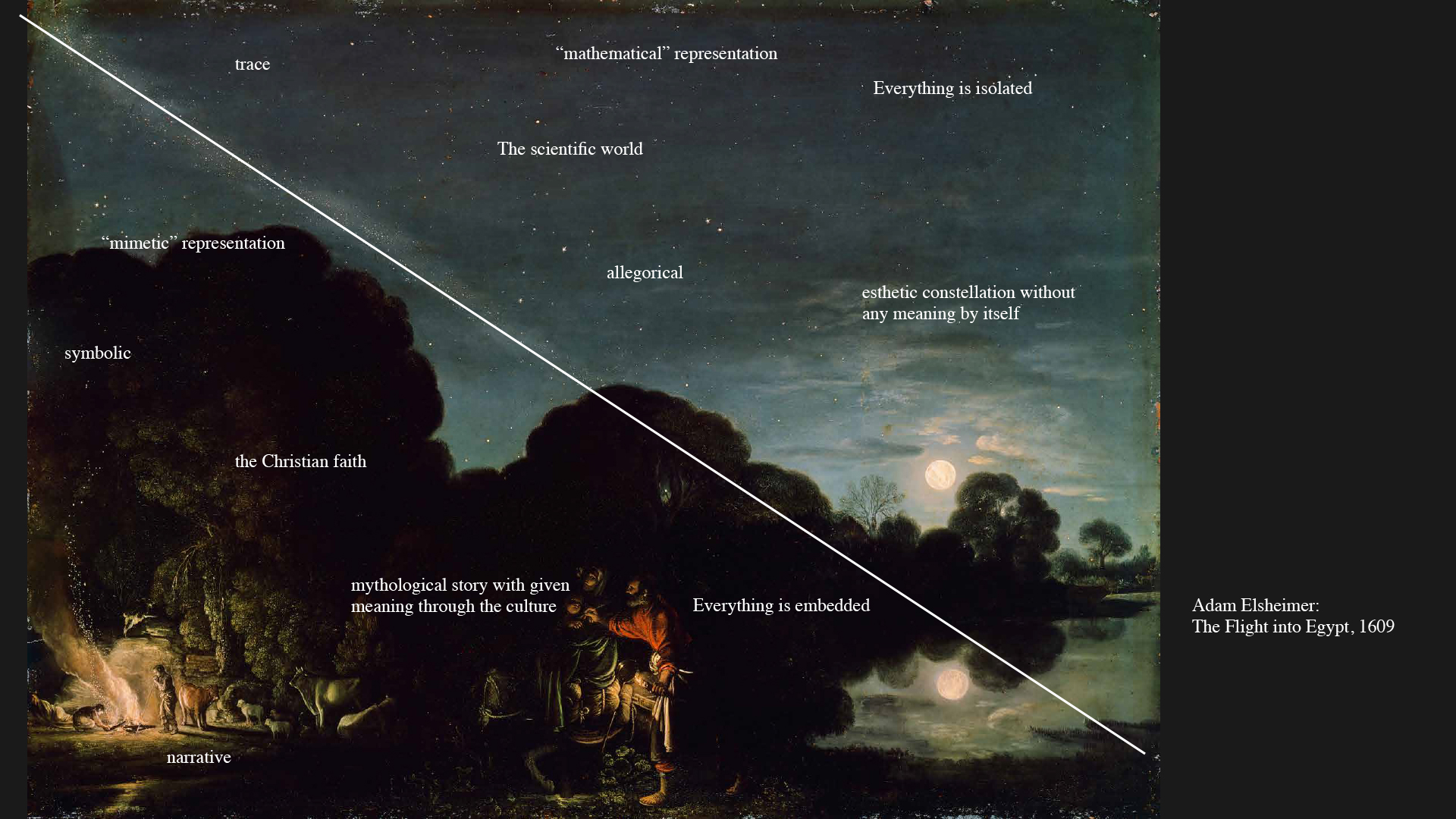
Michael Hofstetter:
We desire a symbolic life and get enigmatic constellations
Royal College of Art, London 2021
in: RCA Master of Research 2021
Transformations and Transmissions
Tuesday September 14th
Atoms and Echoes
Fragments of Voices and Places,
De- and Reconstructed, Documented and Signified
with Lucia D'Errico and Michael Hofstetter
11 am - 1pm (BST)
Why do we believe an image more than an experienced reality?
Why does the evaluation index of the economic success determine all social discourses and committed art?
Why is Greta Thunberg's commitment smothered in the reception of her persona as an original but private quirk?
Western society has been in a fundamental crisis since World War II. It seems there is an impossibility of a real change in their scientific and technological parameters. This change is only symbolically taking place: in the newspaper, on the radio, on television, in scientific discourses, and art - in the media. Capitalist civilization is frozen between nostalgic modernity and postmodern consumption, between atom and echo, dot and projection, radicalism and desire.
All of my artistic works are models of this paradox. The radical gesture of purification, exclusion and renewal are juxtaposed with a photographic reading of multiplicity, appropriation, and classification. Revolution meets desire.
An extreme example for this paradox of radical new beginning and appropriation is my artistic intervention: "My philosophy is: the destruction of old cities and villages every 50 years, the expulsion of nature from the realm of art, ..." at the Museum of Modern Art in Odessa from 2015 (http://www.michaelhofstetter.de/exhibitions-and-views/151-2015-ausstellung-biennaleodessa-malewitsch.html). This work shows particularly clearly the entanglement of our present between the still current claim of art for a radical, hermetic production and at the same time a desire for a successful reception in the sense of accessibility and saleability.
Technological and scientific development was obsessed with discovering the atom. The smallest indivisible elementary particle - the essential building block of the world. Today we know that this idea of an essential primordial component is a social phantasm, owing to the desire for basic substantial truth. Therefore, the atomization of the world was not limited to science, but also conquered art and social theory. It is the key to modernity. Modernity means making visible the radical roots of the world. Every modern work in art and design is an assertion of inevitable origin. Modern works of art are not a sensation, not an invitation to a rambling gaze, modern artworks are merely gestures. A gesture that is supposed to function as a model of transcendental existence. A gesture of annihilation of the tradition and all other decorative issues (Parergon). They are proclamations of a total now in a state of emergency. Malevich's black square was such erasure of the old sun. The warm sun from Chekhov's cherry orchard. To push a black square in front of the life-giving sun is the most radical setting in art history so far. The black square serves as the image atom in art. This is the most radical gesture of making a picture and pointing to the zero point of art history.
Photography has transformed the radical works of modernism into images. They serve now as brandings or product lines. The black square became the logo of the suprematist artist, Malevich. Now, this non-picture is pop. The underdetermined and desemantized grammar of modern works opens up an endless space of association for the viewer. There is a relationship between atomized works of art and an unbound associations recipient. This relation is ruled through media. In the conception of modernism, radical artwork is purely a gesture and has no viewers, only accomplices. The photographic gaze on artworks schooled the recipients to feed the avant-garde images into their empirical everyday-world and use them for their narcissistic self-constitution, so the revolutionary is now a sensation and a whimsy, and the works it produces are hot commodities.
The link between atom and echo, radicality and projection, have formed a bracket of stagnation since the fall of the Iron Curtain. The world has been frozen in an eternal presence for more than 30 years. In this respect, it has completely changed into a photograph - a constellation of dots in which the recipients can read the images of their desire or an accumulation of digital information to run a profitable algorithm over it.
In order to get out of the bracket between dot and echo, between desemantization and resemantization, we have to comprehend the ubiquitous media in its totality: the semantic role of photography and in its technological consequences such as digitization and the role of the Internet. In this permanent hypermedialization of our present, every future is suffocated because it happens only symbolically. But to win a real future, we have to liberate the present from its seductive slag of its medialization. Only when we understand the role Greta Thunberg's home stories play - namely the prevention of real change - can we turn the world around for the better.
Michael Hofstetter 2021
Editor: Ilinca Fechete